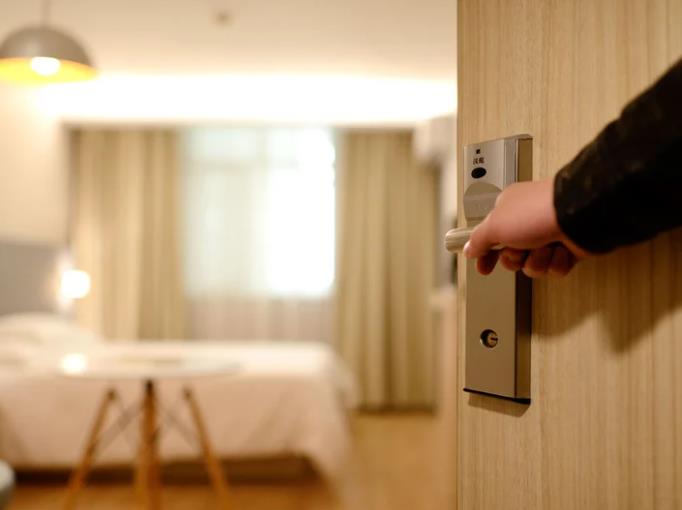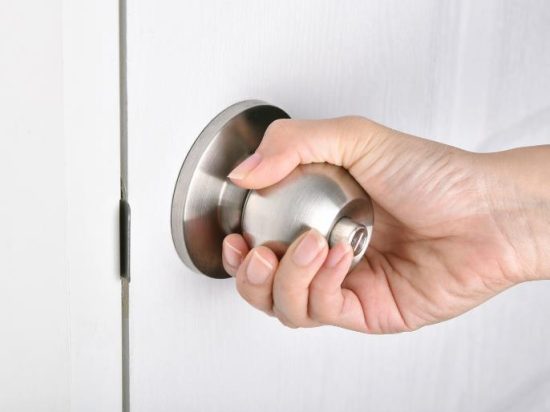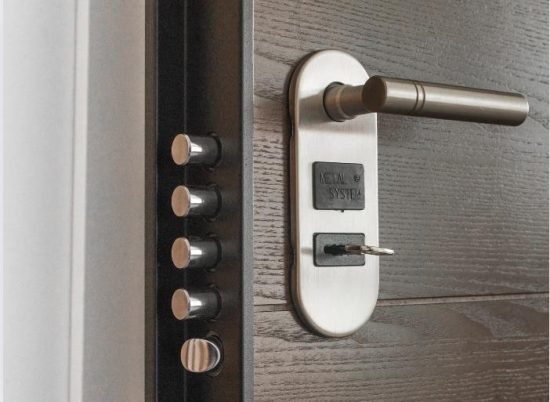How to Unlock Bedroom Door with Pinhole

Being locked out of your bedroom can be a very annoying situation, mainly if it occurs when you need quick access. Fortunately, there are simple fixes available if the knob on your door has a pinhole that can help you quickly regain access. This blog offers a simple, step-by-step method for how to unlock bedroom door with pinhole. This strategy will come in handy whether you lost your key or the lock mechanism jammed. With perseverance and the right tools, you should be able to reach your room without needing assistance. This method works exceptionally well when privacy locks are unintentionally or purposefully activated without evil intent.
Understanding the Pinhole Mechanism
Knowing how the pinhole lock works is helpful before attempting to unlock the door. The pinhole is a component of a privacy lock set and is typically seen on interior doors, such as those in restrooms or bedrooms. Although it doesn’t have excellent security, the ability to lock the door from the inside gives seclusion. The outer knob has a tiny hole intended for emergency access. Although this lock is ideal for internal privacy, it is typically not employed for high-security applications. When someone cannot unlock the door from the inside, as might happen in an emergency, the pinhole acts as a failsafe, permitting admission.
Understanding how this mechanism works is critical for applying it correctly and preventing damage to the lock or door. The actual unlocking mechanism is primary and usually consists of an internal twist function or push button released from the outside using an everyday household object like a paperclip or pin. Learning how to use these locks effortlessly can save aggravation and time when quick access is required.
Tools You Will Need
- Straightened Paperclip
- Small Eyeglass Screwdriver
- Sturdy Pin
How to Unlock Bedroom Door with Pinhole
Step 1: Prepare Your Tool
Choose your tool first. You can use tools like paperclip, an eyeglass screwdriver, or a robust pin. If using a paperclip, ensure it is straight to eliminate any kinks or weak spots. Ensure the tool is clean, clear of debris, and sturdy enough to support the lock mechanism without breaking. Get acquainted with the tool’s feel to ensure it is the proper length to reach the release mechanism inside the pinhole. To prevent breaking the door or lock, mentally prepare to operate the tool precisely.
Make sure the tool fits your hand appropriately. A strong grip will help you maintain control during unlocking. To understand the necessary motion, practice putting and taking the instrument out of the pinhole a few times. This preparatory action is essential to guarantee a seamless and effective unlocking procedure.
Step 2: Insert the Tool into the Pinhole
Find the pinhole outside the doorknob and position the tool’s tip in line with it. Gently insert the tool to ensure it enters the hole straight and without resistance. If the resistance increases, modify the angle a little. Maintaining constant alignment and getting ready for the following action, keep pushing the tool deeper until you are close to the mechanism.
Take care not to push the lock too hard, as this could harm its internal parts. Keep the tool centered to ensure it engages the mechanism accurately. Finding the right depth and angle may take several tries, so it’s crucial to move forward patiently.
Step 3: Locate the Release Mechanism
Locate the release mechanism by gently probing back and forth with the tool inside the lock. Keep an ear out for any faint clicks or movements inside the lock that could indicate movement. To get past obstacles and pinpoint the location where the mechanism feels different, adjust the depth and angle of the tool after it has been located, steady it to keep contact, and get ready to activate the mechanism.
Make sure you move slowly and deliberately so you don’t miss the small feedback that the lock gives you. If needed, slightly remove and re-insert the tool to ensure optimal alignment with the mechanism. This exact method will assist in guaranteeing that you are successfully aiming for the releasing mechanism for unlocking.
Step 4: Push to Engage the Mechanism
Once you’ve discovered the mechanism, activate it by gently pressing steadily inward. Increase the pressure gradually, not bending the tool or harming the mechanism. When the lock disengages, you should hear a click. Before proceeding, ensure the mechanism is fully engaged and maintain constant pressure.
After a few tries, check the position and angle of your tool; if the click is not audible, you may need to make a minor modification. Remember that every lock can feel slightly different, so it’s essential to modify your approach based on the feedback you get. Here, patience is necessary because hurrying this process could harm the tool or the lock.
Step 5: Turn the Knob

Gently turn the door knob with your other hand while maintaining pressure with the tool. If the lock is not engaged, it ought to spin freely. To make sure the knob doesn’t relock, turn it slowly. If the knob is resistant, change the tool’s pressure appropriately. Verify the smooth operation of every component of the system once the knob has been fully turned.
To avoid any accidents, make sure to apply a force that is balanced on the tool and the knob. Aim to move steadily and with control; any abrupt jerks could force the mechanism to latch again. By handling the door carefully, you can ensure it unlocks successfully and doesn’t harm the lock.
Step 6: Open the Door
To open the door, turn the knob and gently push or pull. The door ought to open effortlessly. Remove the instrument with caution so as not to harm the pinhole. Make sure everything is in functioning order by looking for any indications of stress or damage on the door, frame, and knob. Lastly, give yourself a pat on the back for successfully regaining entry to your room without incident.
If the locking mechanism moves during the unlocking procedure, be sure to readjust it if needed. For further security in the future, make sure the door closes and locks smoothly. If you need to use your tool again, keep it in a secure location for quick access.
Maintaining Your Privacy Locks

As necessary as knowing how to enter your home in an emergency, you should also maintain your privacy locks to ensure they work correctly and give you the seclusion you need when needed. Check these mechanisms frequently to see if they need to be adjusted or replaced, especially if the door is older. To keep the locking mechanisms from stiffening up or making noise, ensure they are oiled regularly. Doing this will also decrease the components’ deterioration.
Cleaning the area surrounding the lock and door handle is a good idea because dirt and debris can build up and cause malfunctions. Should you see any problems with the lock not locking into place or if it appears loose, get professional advice to determine whether a repair or a replacement is required. By taking these precautions, you may increase the longevity of your locks and guarantee your house’s security. Recall that keeping your locks in good operating order improves safety and guarantees privacy at the same time.
Conclusion
When you’re locked out of your bedroom, you can avoid needless anxiety by using this easy technique with a pinhole. It’s a simple skill that works with most residential privacy locks and needs a few essential tools. Recall this method is intended to be used in solving situations or as a practical joke, it should always be applied sensibly and morally to protect the security and privacy of others.
By following this guide, you can ensure that being locked out of a bedroom is just a minor annoyance and not a major emergency.
Related Articles:
FAQs on Unlocking Bedroom Door with Pinhole
What is a privacy lock?
A privacy lock is designed to offer a basic level of security and privacy. It is typically used on interior doors in residential settings such as bedrooms and bathrooms. These locks usually have a locking mechanism inside and a pinhole outside for emergency access.
How often should I check the functionality of my privacy locks?
It’s recommended that you check your privacy locks at least twice a year. Look for signs of wear, stiffness in operation, or damage. Regular inspections will help catch issues before they require major repairs.
What tools are best for unlocking a privacy lock through a pinhole?
The most commonly used tools are a straightened paperclip, a small eyeglass screwdriver, or a sturdy sewing pin. These tools effectively engage the release mechanism accessed through the pinhole.
How can I maintain my privacy locks to ensure smooth operation?
Regularly clean and lubricate the locking mechanism to keep it functioning smoothly. Avoid harsh chemicals; a mild soap solution and a soft cloth can use to clean the lock’s external parts.
